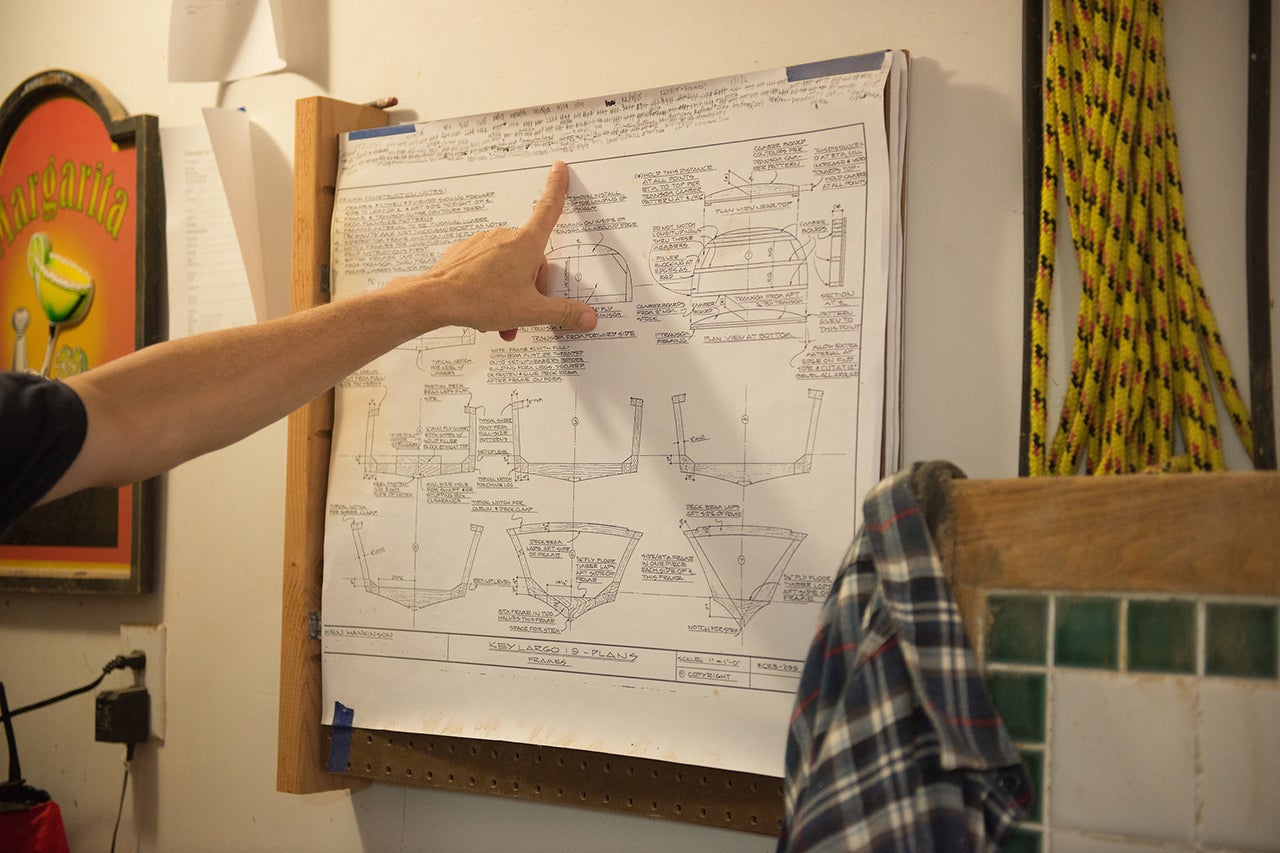Professor Mike Flynn has a passion for boatbuilding. For him, it’s much more than a hobby. If we’re honest – and Flynn will admit to this – it’s really more of an obsession.
Flynn, who taught exercise science in the Department of Health and Human Performance until his retirement this summer, is now the department’s Scholar in Residence. He has been building wooden boats from scratch for nearly 20 years. It all started when his mother gave him a book on strip-building sea kayaks for his birthday and he’s been taking on increasingly complex projects ever since. These days, that obsession monopolizes a good portion of Flynn’s non-working hours.
Step into the garage beneath his home on the southern end of James Island and you’ll find it crammed with tools and boatbuilding materials. Suspended from the ceiling are two kayaks that he built. Out back in the yard are two other boats that Flynn crafted. And mounted to the wall nearby are the plans for his latest project, a 20-foot wooden runabout that will be powered by an inboard engine.
This particular project sits in the center of the garage. To some it might resemble a lump of laminated wood, but to Flynn it represents 600 pluss hours of labor and a good deal of dreaming.
“Building a boat like this doesn’t require as much skill as you’d think,” he explains, “it just requires a lot of patience. And, it helps if you’re a good problem solver.”
Flynn admits that he often ponders the next step in his project as he drifts off to sleep at night, and then continues mulling it over in the morning. “A lot of times, after three or four days of rumination, I’ll come up with just the right solution to the problem. That’s really the most important skill; figuring out how to do things with less than the perfect tools.”
Not long ago, he encountered just that sort of obstacle when faced with making the one-inch-by-two-inch longitudinal stringers take a compound curve as they extend forward to form the bow of the vessel.
“There’s a lot of good advice to be found online, but sometimes the solution that works for someone else won’t work for my project. So, I realized that I could force those pieces of wood into a compound curve if I steamed the final eight feet of the board. So, I fashioned a steam box using a wallpaper steamer and a PVC tube. After about an hour of steaming each piece, I managed to soften the wood sufficiently so that I could get it to take the required twist.”
Flynn is two years into this particular project. He expects it will take him another two to finish. But he’s in no hurry.
“Actually, I think I enjoy the building process more than the finished product,” he says, smiling. “Don’t get me wrong. I definitely use the boats I’ve built, but I’ve come to realize that I get more enjoyment out of actually putting them together.”
When asked what motivated him to build a powerboat, Flynn says, “I think doing something a little more complex was appealing. Wood is pretty familiar to me now, but when I get to installing the engine and working on the electronics, those things are foreign to me, so it will definitely be challenging.
“In some ways,” he says, “working on this project is similar to the research I do. When you start a research project, it never goes the way you expect. You often have to take a step back, reflect, and come up with a solution to the problem; some new way to gather information, improve reliability, get subjects to comply with the protocol, etc. Research is rarely perfect and sometimes the process has to be tweaked as you go. My boats are most certainly not perfect either, but all of them do float!”
Flynn likes to name each of his boats, usually in honor of someone or something in his life. When this current boat is finished, he plans to christen it in honor of his father.
“My father died shortly after I launched the sailboat that I built in 2008,” he explains. “I always regretted not naming that boat after him. This new one will be a tribute to him, but I can’t tell you the name, yet.”
What Flynn can say is that work on this project will likely accelerate in the near term because of his retirement from the College. And it’s also likely as well that once he finishes this boat, the next project will already be taking shape in his mind.
Feature photo by Reese Moore.








